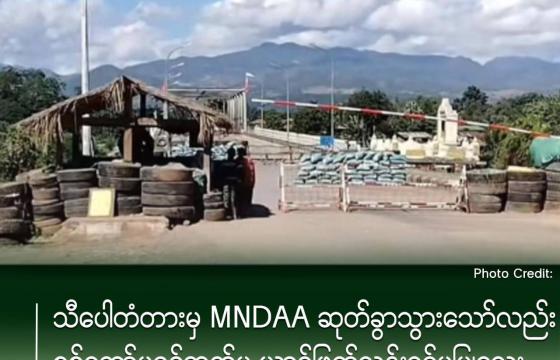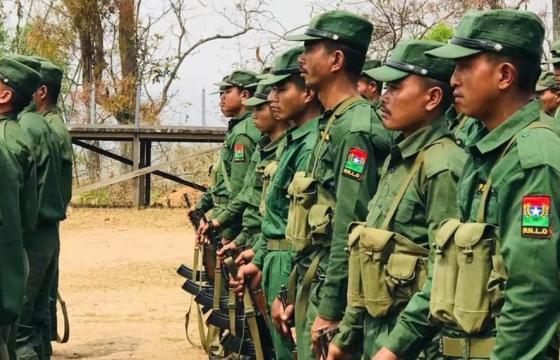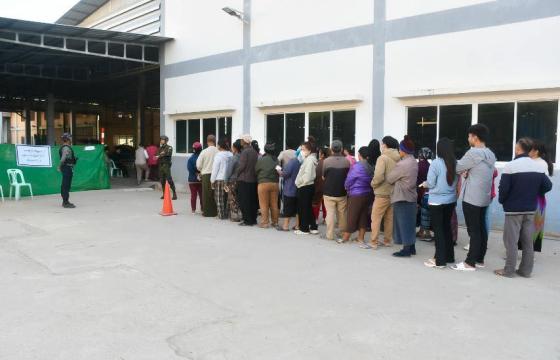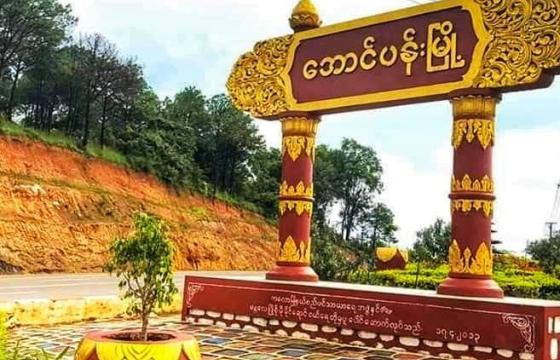Foreword
Burma, a name of the country which has been used in the English language, is also known as Myanmar, after the military junta, the State Law and Order Restoration Council (SLORC), changed the name to the Burmanized form, and insisted on the use of it in the English language as well. The name “Burma” will be used in this commentary, for it is still not usual to describe members of one of the ethnic groups of the country the Burmans, as Myanmans and the language as Myanmese.
This brief analysis is written, because Burma’s long civil war has become an enigma for historians, journalists, academics and especially peace brokers, who based their study and analyses mainly on propaganda of those in power and politically motivated writings during the Cold War.
This is a time when the peace NGOs of the EU, US and Japan are wringing their hands as the peace process they have designed and supported has stalled, after nearly 7 years of operations. Instead of a through and objective review of the peace process for a solution, the NGOs are blindly pressuring the ethnic armed organizations (EAOs), which cannot agree with all the terms of the Nationwide Ceasefire Agreement (NCA), to sign it.
To understand the present situation of War and Peace in Burma, we need to know the history of the country further back on the historical time-line, well beyond recent history. This presentation is also based partly on the observations and knowledge that have coalesced as a result of hindsight, after the Cold War.
Feudal History of Burma
The recorded history of feudal Burma has three dynasties. With myths and legends, the Burman historians claimed the dynasties to be three Burman empires encompassing vast areas of land of the non-Burman peoples and neighboring countries. The instrument of empire building by the Burman dynastic kings was brutal wars. As usual in the backward feudal period, the wars were for seizing slaves, craftsmen, artisans and the plundering of natural resources. For the Burman elites, war and empire building are accepted as a convenient and profitable way of national development.
The wars and treatment of the vanquished in the building of the 1st and 2nd Empires were comparatively endurable. However, those of the 3rd Empire were most brutal and heinous from the very beginning. For example, when the siege of the Royal City of Hanthawaddy was not making progress, the dynastic Burman king Alaungpaya persuaded the Mon king, through three venerable Buddhist monks, with the promise that all his royal status would be restored, after a token surrender. When the gullible Mon king surrendered, all members of the royalty including the king, and all the men, women and children in the walled city of Hanthawaddy, were slaughtered and the city was totally sacked.
After the sack of Hanthawaddy, Alaungpaya invited all the Buddhist monks in the Mon kingdom under the pretext of offering alms. When 3,000 or so Mon monks arrived, Alaungpaya massacred every one of them. Then his men attacked and ransacked the Mon villages in lower Burma. Since then, the Mon people, a rival nation of the Burman, have become a relatively small minority and never recovered their former status.
The Rakhine kingdom, Ayutthaya kingdom of Siam, the Manipuri, Assam, Lan Na, Luang Prabang etc. suffered a similar fate at the hands of Alaungpaya’s descendants, whose followers were equally heinous and ruthless psychopaths.
Naturally, as a result of historical experiences, the non-Burman nationalities, who had been victims of the Burman imperial wars and domination, view the Burmans as aggressive, greedy, treacherous, deceitful, racist and militant warmongers, up to this day.
British Colonialism
The British imperial power wiped out the third and last Burman feudal empire and annexed the country, after three wars, into its colonial possession in 1885-86. It was a time when the Burman elites were thinking themselves to be at the center of the universe, and possessing the greatest power, civilization and finest culture. Burman rebellions against the British occupation continued for the next ten years .
The British domination enhanced the Burman elites’ ideology of racial supremacism and they continued to retain the delusion of power and grandeur, with disastrous follow-through impact after the independence of the country.
On the other hand, the non-Burman nationalities such as the Rakhines (Arakanese), Kachins, Karens, Karennis, Mons, Shans, etc. regarded the British colonization as a liberation from the heinously oppressive and exploitative Burman imperial rule. For this, the Burmans regarded the non-Burman nationalities as stooges of the British imperialists. The Burman elites’ agenda to throw off British colonial rule did not materialize again until 1920, 35 years after the occupation. It took the form of widespread civil disobedience begun by Rangoon University students. The anti- British activists among politicians, university students and intellectuals studied widely the political systems and ideologies of the world. However, the main agenda of the racial supremacists in the movement was to establish the Fourth Burman Empire after throwing off the British domination.
The Burman independence movement saw WW-2 as a grand opportunity and many leaders of the movement sided with the Japanese invaders. The Burma Independence Army (BIA) was formed in Thailand by 30 young Burman independence activists, or The Thirty Comrades , a few months before the Japanese Imperial Army invaded Burma in December 1941. In the early months of 1942, the Japanese and the BIA occupied Lower Burma. The racial supremacists in the BIA ranks committed atrocities against the Karen civilians on the allegation that Karens were British stooges and spies . The atrocities took the form of racial suppression and war similar to those of the feudal days. Many innocent Karen men, women and children were massacred, and many villages were ransacked and torched.
Post-Independence Burma
Gen. Aung San, the hero of Burma’s independence, was a far-sighted, sincere and sensible leader. He promised the non-Burman nationalities of the country full equality and autonomy in a federal system of government, in independent Burma.
Most unfortunately for the country, he was assassinated by Burman racial supremacists in his own party, the Anti-Fascist People’s Freedom League (AFPFL), before independence, because he was against the racial supremacists’ agenda of establishing the 4th Burman Empire, or Burman hegemony over the non-Burman nationalities of the country.
The ruling AFPFL party, was made up of factions of moderate nationalists, socialists, communists and racial supremacists, with diverse political agenda. The racial supremacists’ faction, under the banner of the socialist, had the most power in the party and managed to influence the Burma Armed Forces (BAF), with plants in the army officer corp. Power-mad Gen. Ne Win was one of the leading officers allied with the racial supremacists. He can be considered as the father of Burma’s civil war.
In late 1948 and January 1949, Gen. Ne Win used his pocket army troops to attack the Karen people’s movement for a Karen State, in the belief that he could easily wipe out the movement in a short time. He got rid of the BAF Karen general , above him, and used the BAF to suppress the Karen people’s armed resistance, which quickly spread to many parts of lower Burma, the ancient land of the Karen people.
After a few months, as his supply ran low, Gen. Ne Win and his mentors in the AFPFL government tricked the British government to provide arms and ammunition stockpiled in India, during WW-2. In sympathy with the Karen, some Karenni, Pa-ao and Mon armed organizations joined the Karen armed resistance. In the 60s, the Shan and the Kachin peoples started armed resistance as well, when they realized that the Burmans in power had reneged on their promise to amend the Constitution to be in line with a federal system.
Starting from the early days of independence, the AFPFL government was under pressure from the US and the UK to join the anti-communist Western Bloc (the Free World). In 1958, there was a split in the AFPFL Party between the racial supremacist faction and the moderate nationalist faction, on the question of joining the anti-communist bloc or remaining non-aligned in the Cold War.
Gen. Ne Win, who wanted military and financial support from the Western Bloc for suppression of the burgeoning insurgencies, installed himself and the armed forces - as the care-taker government , under the pretext of maintaining law and order.
In the 1960 general election, the Pyidaungzu Party led by U Nu, a moderate nationalist, was returned to power in a landslide victory. In 1961, he held a series of meetings with leaders of the Shan, Kachin and Chin nationalities, which had the constitutional rights to secede from the Union of Burma, after ten years of independence. U Nu reached agreement with the leaders of the said nationalities for establishing the country as a federal union.
The formation of a federal union was against the racial supremacists’ agenda of keeping the country as a virtual empire, with a strictly centralized unitary state, and the non-Burman nationalities as colonial slaves. On March 2, 1962, Gen. Ne Win, who had now become a full-blooded racial supremacist, did not need much urging from the racial supremacist Burman elites to seize power, under the pretext of saving the Union from disintegration, and set up a military junta known as the Revolutionary Council of Burma (RCB). He also did not need much effort to trick the Western Bloc and Japan, which had been trying to win over Burma as a client state to contain the spread of communism and the influence of China, to get massive military and financial assistance to fight the insurgencies, which he alleged were communist inspired.
Under the banner of Burmese Way to Socialism, Gen. Ne Win nationalized the banks, and all the means of production and distribution of goods. In reality, he was putting the country on a war footing for wiping out the insurgencies. Under this system, jobs became scarce for the youths and new university graduates. Employment in the armed forces only was wide open and easy.
In spite of massive military and financial assistance from the US, UK, France, Germany, Italy, Japan and a few others, the country had become impoverished by 1987, from 25 years of military rule and the burgeoning cost of the civil war. It had to apply for Least of Least Developed Country (LLDC) status at the UN. The 1988 nationwide pro-democracy uprising forced Gen. Ne Win to step down from power and the ruling Burma Socialist Program Party (BSPP) was abolished. A new military junta known as the State Law and Order Restoration Council (SLORC) was set up with a military general as its head. In the meantime, the BAF had become a thoroughgoing racial supremacist military establishment, as a result of indoctrination and training under Ne Win’s rule.
The SLORC promised to hold multi-party general elections in 1990 and transfer power to the winning party. However, when the opposition party, the National League for Democracy (NLD), won a landslide victory in the elections, the junta refused to transfer power. Then a new military junta known as the State Peace and Development Council (SPDC) was formed, and which went on to draft a pro- military constitution for the country. The off-and-on constitution drafting process lasted 15 years. The Constitution gives de facto powers to block constitutional amendments, make war and peace, and control law enforcement to the military establishment. As it was adopted in the year 2008, it has come to be known as the 2008 Constitution of Burma.
Pressure for Change
After the refusal by the military to give up state power, the US in 1989 started to pressure the SPDC regime for change, with threats of trade and economic sanctions and an arms embargo. With hat in hand, the SPDC went to China and appealed for military, financial and economic assistance , apparently with a promise to restore peace and stability in the country and alleging the resistance forces of the non-Burman nationalities and the pro-democracy movement were stooges of the capitalist West.
In the low and crafty ways of the racial supremacists, the SPDC entered quickly into ceasefire agreements in the second half of 1989, with the resistance forces of the non-Burman nationalities in the north, opposite Yunnan Province of China. To isolate and annihilate the resistance forces in the south, opposite Tak and Mae Hong Son provinces of Thailand, especially those of the Karenni and Karen peoples, the SPDC made the impossible demands of kicking out the pro-democracy activists, who had come to the Karenni and Karen areas for refuge, after the 1988 nationwide uprising was brutally crushed; either laying down arms or serving as border guard forces under it; and to enter the legal fold. Naturally, the ceasefire talks did not get anywhere. The SPDC launched military campaigns one after another for
18 years, in addition to using religion and business opportunities to divide the Karen resistance forces. At the same time, its propaganda machine alleged the KNU did not want peace. When the trade and financial sanctions by the US were hurting, the SPDC needed to show that it was not a client of China, in order to regain favor from the West, which still adopted the constructive engagement mode. For that, it launched in 2009 military attacks and drove out one of the ceasefire organizations the Truth and Justice Party, and its military wing the Myanmar National Democratic Alliance Army of Kokang, in the north on the border of China. The Kokang people are ethnic Chinese, whose land had been annexed into British Burma, by the colonialists during their rule of the country.
This perfidious act made China start questioning the sincerity and trustworthiness of the SPDC junta. When the Burman generals resumed war against the Kachin Independence Organization (KIO) in June 2011, after nearly 18 years of ceasefire and natural resources looting, China started to realize that the SPDC was just a rogue regime, without any sense of fairness, justice or fidelity.
When the war against the KIO turned out to be difficult, the quasi civilian government of the military-supported party, the Union Solidarity and Development Party (USDP), quickly entered into ceasefire agreements with the resistance forces in the south in early 2012, on the Thai-Burma border.
To test the sincerity of the Burman regime and the military, the non-Burman resistance forces made the demand to declare a nationwide ceasefire - to stop war against all the resistance forces, and to hold political dialogue. Again, the Burman military used all kinds of trickery to divide the unity of the resistance forces, with bribery and rosy promises for investments, development and huge business opportunities. This time it was to isolate the northern forces for annihilation.
The strategy to divide the resistance forces was successful partly because of ideological corruption and greed among some of the resistance leaders and partly by the influence and advice of the Peace NGOs funded by the EU, Japan and the US.
The Peace Process Starting from January 2012, the resistance forces in the south signed ceasefire
agreements individually, as demanded by the USDP regime and in contravention of the resistance alliance, the United Nationalities Federal Council (UNFC). Then, without a nationwide ceasefire, the ceasefire agreement signers of the resistance forces, now known as the Ethnic Armed Organizations (EAOs), together with the USDP regime and the Burman military known also as the “Tatmadaw”, held meetings for nearly 4 years to lay down nationwide ceasefire agreement terms and a framework for political dialogue. The two together were called the Nationwide Ceasefire Agreement (NCA). A draft was produced and then signed in October 2015.
In the general election of November 2015, the NLD won a landslide victory. After a long delay it formed a new government in April 2016. Now the NLD government has become a partner in the peace process and the conference for political dialogue between it, the Burman military (Tatmadaw), the EAOs and the political parties has been renamed the Myanmar Peace Conference 21st Century Pinlong (MPC 21st 13 CP). The northern resistance forces have also formed a new political alliance known simply as the Northern Alliance.
Right from the beginning, in the meeting of the MPC 21st CP held in 2016, (and also in the meetings in 2017 and 2018), Tatmadaw representatives insisted that the NCA signed in October 2015, which was endorsed as a draft by the EAOs, was in fact final and that no changes would be made. The insistent demands of the Tatmadaw are that the EAOs firstly carry out Disarmament, Demobilization and Reintegration (DDR) of their armies, form political parties, enter the elections and work for the democratic transition and establishment of a federal union in the parliament, in accordance with the 2008 Constitution; and, relinquish the demand for self-determination rights and promise not to secede from the Union of Myanmar.
Most EAOs see the Tatmadaw’s demands as preposterous, as they are in accordance with the agenda of Burman racial supremacists and feudal imperialists. Some EAOs thought that it was misinterpretation of the NCA terms by the Tatmadaw. In fact, the Tatmadaw leaders know precisely what the terms of the NCA mean. The Tatmadaw racial supremacists are in the peace process simply to force or convince, by hook or by crook, the EAO leaders that there will be no peace until and unless the agenda of Burman racial supremacists is accepted and implemented.
Most leading EAOs’ position is that there will be no peace until the country is established as a genuine federal union based on democracy. By a genuine federal union, the EAOs mean that there must be equality and self-determination for every nationality in the union, democratic freedom and justice, and no domination and exploitation of one national group by another.
In the hope of resolving the deadlock, the NCA signers of ten EAOs called for a summit meeting of the top leaders in October. At the meeting, the Burman military chief Sr. Gen. Min Aung Hlaing repeated the same Burman racial supremacists’ agenda, demanding the EAOs to carry out DDR, form political parties, enter the elections, etc.
This hardline stance of the Tatmadaw is a source of serious disappointment and frustration for the NCA signers. As a retreat to review the peace process and hopefully find a viable solution, some EAOs have resorted to suspending their participation in the next MPC 21st CP. They also have to explain sensibly to their support base and the public that they cannot be held responsible if the process fails.
Note to Peace Brokers
The ideology of the Tatmadaw and most of the Burman elites is racial supremacism that is feudal in nature. The ideology has turned them into bigots, zealots, chauvinists, expansionists and aggressive and pathological liars. They are under a serious delusion of power, greatness and grandeur. They regard all the other nationalities, including those of the US, EU, Japan, China etc. as racially inferior.
They always overestimate their own strength and superiority. They never hesitate to use trickery, treachery or force for gaining an advantage. For political advantage, the Burman racial supremacists have been telling the lie nationally and internationally that the Burman population is nearly 70% and the population of the non-Burman nationalities together is less than 30%. The other big lie they are telling is that there are 135 nationalities in the country. The facts are that the Burman population is only 28% and there are only 8 major and about 3 or 4 minor ethnic nationalities. The rest are just clans of the major nationalities.
The ideology of racial supremacism has caused the civil war and the lies have prevented a solution of it. One promising approach would be if the major powers like the EU, UK, US, Australia, Russia, India, Japan, China etc. stopped believing the Tatmadaw and Burman racial supremacists, and did not aid and assist them, especially to increase their capacity to wage war as during the Cold War. If this happened, the civil war would simply run out of steam, and a peaceful and viable settlement of all the country’s problems would be possible.
November 29, 2018
The organizations refer to themselves also as the Ethnic Revolutionary Armed Organizations (ERAOs). Hanthawaddy was the Mon kingdom restored after the fall of Toungoo Dynasty. The rebellions took the form of banditry by small armed bands rather than a widespread resistance by an organized force.
Up to this day, the narrative of the Burman racial supremacists is that the Burmans as a race belong to the Thargi ruling class, or Thargi master race. The Thirty Comrades were spirited out of the country and trained on Hainan Island by the intelligence wing of the Japanese Imperial Army.
Many Karen leaders held the head of the BIA, General Aung San, as responsible for the atrocities. The fact is that Gen. Aung San was away in the Kachin State with the vanguard of the Japanese Army. He did not know about the atrocities until he returned from the front. As soon as he learned about the matter, he met with the Karen leaders and started the Karen-Burman friendship movement.
A Burman politician, U Saw, who had a minor role or just a knowledge of the assassination plot was tried and hanged. He was used as a scapegoat by the real plotters, who managed to escape totally from prosecution.
The top General of the BAF was a Karen, Gen. Smith Dun, a professional soldier of WW-2. Gen. Aung San accepted the British arrangement of appointing Gen. Dun as head of the BAF. The independence, or the 1947 Constitution, was drafted and adopted after the death of Aung San. The Constitution was strictly unitary. When the non-Burman nationalities leaders complained about the matter, the Burman leaders assured them that the Constitution would be amended into a federal one after independence.
Gen. Ne Win’s initial plan was to seize state power, but Premier U Nu managed to turn it into a formal handover of the mandate by the parliament. China gave the SPDC military junta led by Gen. Than Shwe, aid and assistance liberally on the condition that peace and stability are to be restored and kept in the areas along the China-Burma border.
Sanctions by the West were not completed as the UK, Germany and Japan continued trade under the Generalized System of Preferences (GSP). Pinlong, a town in Shan State, has immense historical significance. Aung San, father of Burma’s independence, held a conference with the major non-Burman nationalities leaders to urge them to take independence at the same time as the Burmans. He promised complete equality, full autonomy and the right to secede from the Union after 10 years to the non-Burman nationalities leaders, if they found the Union to be unsatisfactory.







